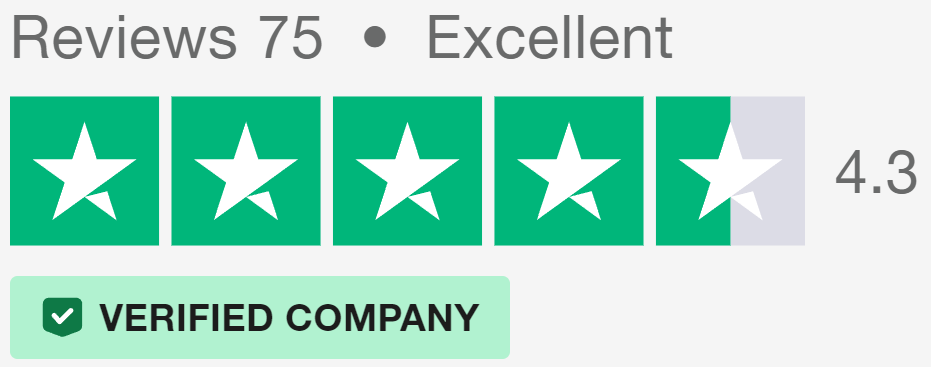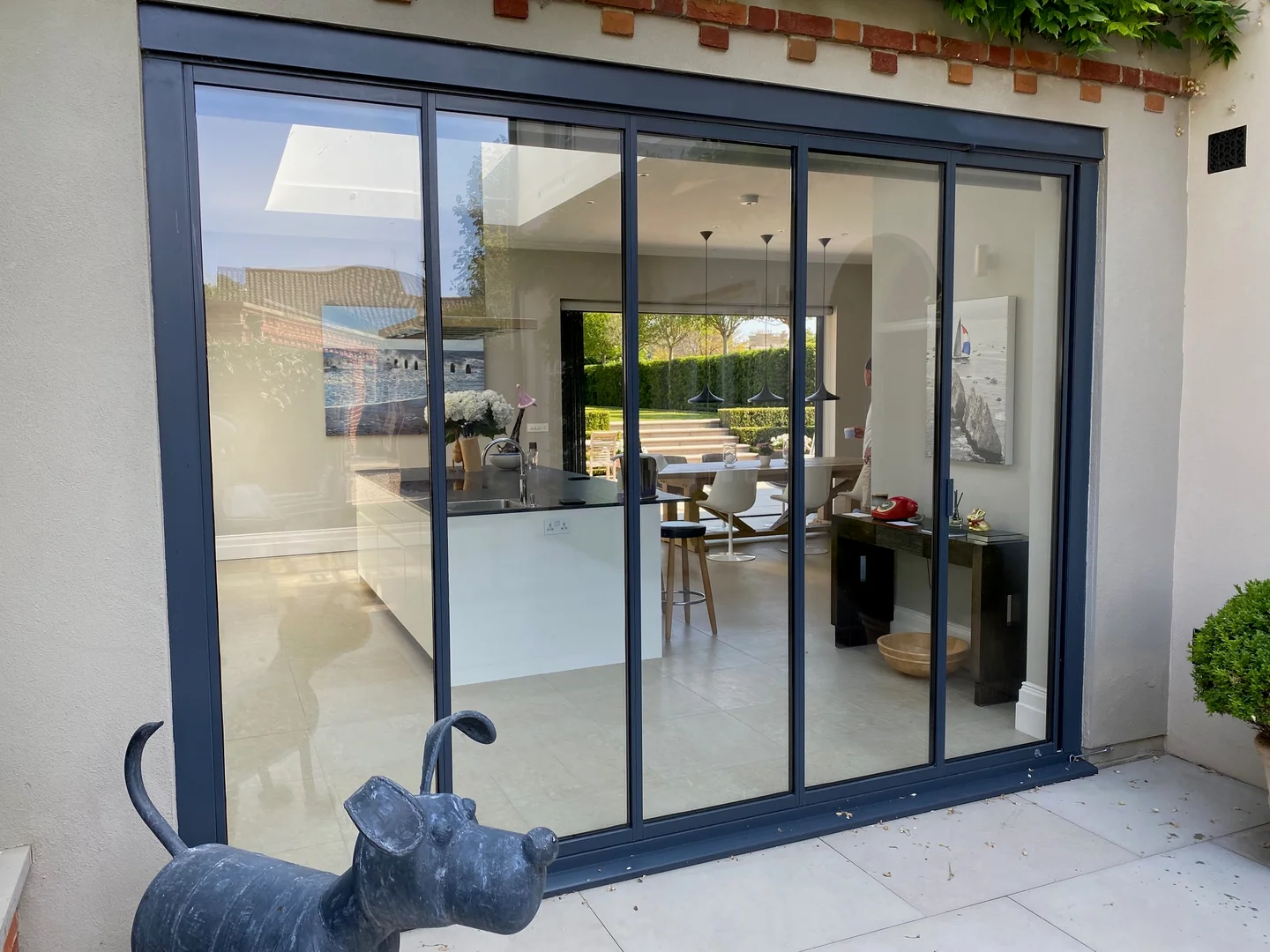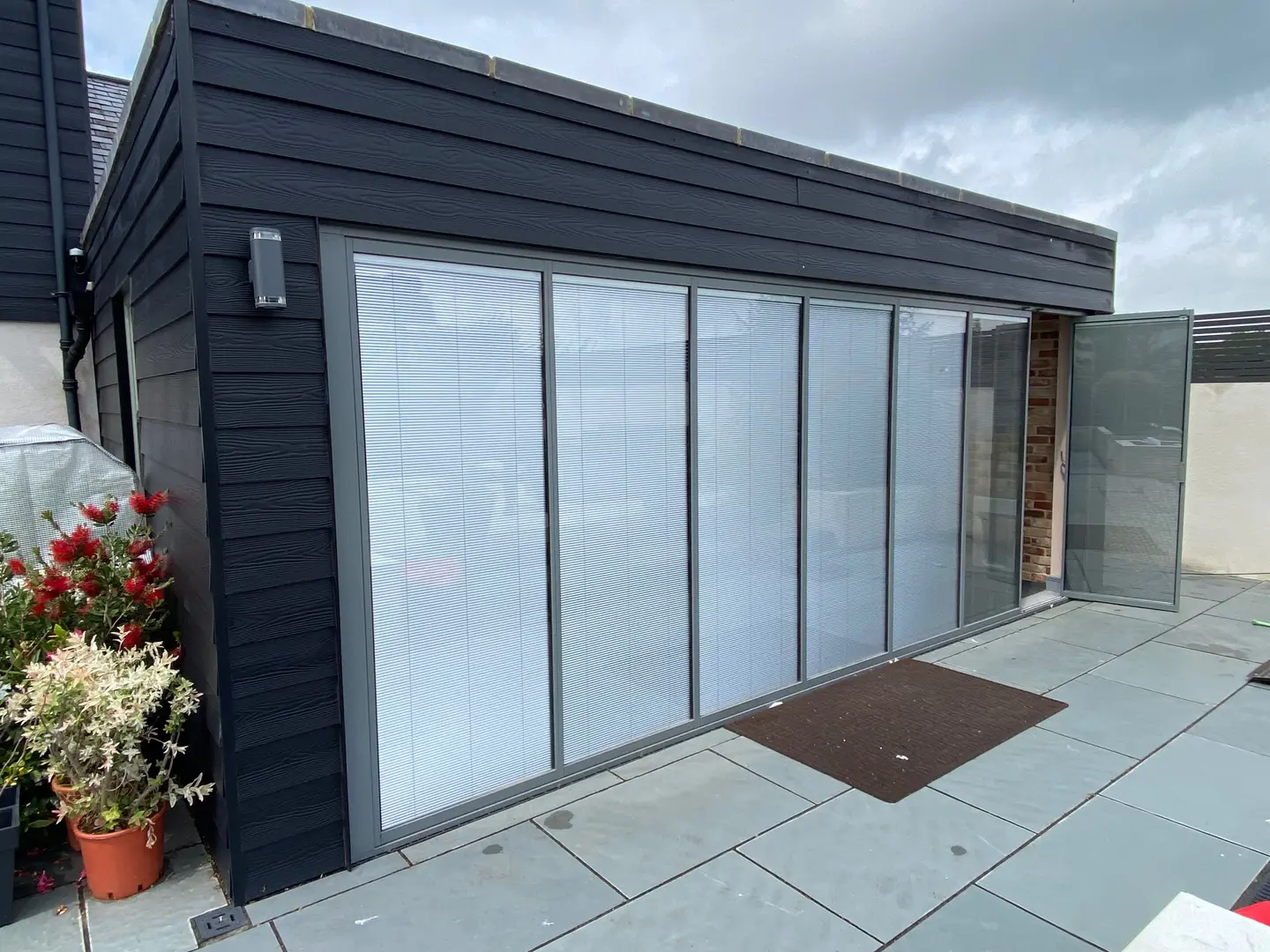Grey Aluminium Sliding Doors Guide: From RAL to Room Design
Table of Contents

Grey Aluminium Sliding Door Colours and Finishes
Grey aluminium sliding doors bring a modern touch to British homes, with their clean lines and sophisticated appearance making them a popular choice for renovations and extensions.
Cool vs Warm Grey Sliding Door Shades
The subtle undertones in grey paint finishes make a marked difference to how sliding doors look in your space. Cool greys contain hints of blue or green, lending themselves perfectly to contemporary homes with stark white walls or exposed concrete features. Warmer greys, carrying brown or red undertones, work brilliantly with traditional materials like brick and wood.
Many homeowners opt for glass patio doors in anthracite grey, which strikes an excellent balance between bold and neutral. The deep, rich tone of anthracite stands out against lighter walls while maintaining enough subtlety to complement rather than overpower surrounding materials.
RAL Colour System for Grey Sliding Doors
RAL codes provide exact colour matches for grey aluminium sliding doors, removing any guesswork when choosing shades. Each code represents a precise colour specification – RAL 7016 denotes classic anthracite, while RAL 7035 creates a lighter, more subtle look. Paint manufacturers worldwide use these standardised codes, ensuring your doors match exactly what you saw in the showroom.

Powder Coating vs Anodised Finishes
Powder coated aluminium doors offer remarkable durability through a process that bonds the colour directly to the metal surface. The coating creates a hard-wearing barrier against scratches and weathering while maintaining the crisp appearance of the grey finish.
The longevity of your grey aluminium sliding doors depends heavily on the finishing method used. Anodising embeds the colour within the metal itself, producing a metallic sheen that resists fading even in strong sunlight. The process strengthens the aluminium surface, though it limits colour options compared to powder coating.
Natural and Artificial Light Effects
Morning sun brings out different qualities in grey aluminium sliding doors than evening light does. North-facing installations might appear darker and more muted, while south-facing doors catch more light and show off subtle variations in the grey tones. Bright spotlights can highlight the metallic qualities of anodised finishes, whereas softer ambient lighting tends to smooth out the appearance of powder-coated surfaces.
Matching Grey Aluminium Sliding Doors to Your Home
Picking the right shade of grey for your sliding doors shapes the whole character of your space. The colour must work with your home’s existing materials, from brickwork to flooring, while fitting your personal style.

Working with Different Brick Types
Red brick homes need careful colour matching when installing grey aluminium sliding doors. Lighter greys often clash with traditional red bricks, while deeper shades like anthracite grey aluminium sliding doors create a striking contrast that draws attention to architectural features. Yellow or buff bricks pair beautifully with mid-tone greys, letting the doors stand out without becoming the sole focal point.
Stone buildings present their own unique requirements. Slate grey tones mirror the natural variation found in stone walls, while warmer greys pick up the honey tones common in British limestone. The textures of different stones also play into the equation – rough-cut stone benefits from darker greys that echo its depth, while smooth ashlar masonry works well with lighter, more uniform grey finishes.
Material Harmony Guide
Rendered walls offer perhaps the most flexibility when choosing grey aluminium sliding patio doors. White render provides a clean backdrop for any shade of grey, though very light greys might appear washed out against it. Coloured renders need more thought – cream renders suit warmer greys, while grey renders demand careful tone matching to avoid subtle clashes.
Complementing Wood Elements
Natural wood brings warmth to spaces fitted with grey aluminium sliding doors. Oak flooring pairs particularly well with mid to dark greys, its golden tones creating a balanced contrast. Darker woods like walnut need lighter grey doors to prevent the space from feeling too heavy.
Wooden furniture near your doors deserves attention too. Tables and chairs in raw or lightly finished wood create an inviting atmosphere next to grey doors. The organic qualities of wood grain soften the precise lines of custom made sliding doors, bringing balance to contemporary spaces.
Natural and Artificial Light Effects
Morning sun strikes grey aluminium sliding doors differently than afternoon light does. South-facing installations show off the metallic qualities of the finish, while north-facing doors might need a lighter shade to prevent them from looking flat or dull. The way light moves across your doors changes their appearance throughout the day – what looks perfect at noon might seem too dark by evening.
Artificial lighting requires equal attention. Spotlights aimed at grey aluminium sliding doors create bright patches and shadows that change how the colour appears. Indirect lighting tends to flatten the appearance of the grey, while uplighting can emphasise the vertical lines of the frame. The position of your lights matters as much as their type – poorly placed fixtures might create unwanted reflections or make the doors look uneven.
Grey Aluminium Sliding Doors Design Tips
The width of your frames influences how prominent your doors appear. Slim frames suit minimalist spaces, letting the glass take centre stage, while wider frames make more of a statement. The proportion of frame to glass needs careful balancing – too much frame can make the doors feel heavy, while ultra-slim frames might look out of place in traditional homes.
Door handles and hardware need matching thought. Silver or chrome hardware maintains the modern feel of grey aluminium sliding doors, while black handles create stronger contrast. The size of the handles changes the overall look too – substantial handles make a bold statement, while minimal handles keep the focus on the clean lines of the frame.
Room layout plays into the success of your door installation. Furniture placement near grey doors needs planning to maintain clear walking paths while framing views through the glass. The way you arrange seating can direct attention towards or away from the doors, helping you control how they fit into your overall design scheme.
Styling Your Grey Aluminium Sliding Doors
The visual impact of sliding doors extends far beyond the frames themselves. Your choice of surrounding colours, textures, and furnishings shapes how well grey aluminium sliding doors work in your space.
Monochrome Interior Schemes
Black and white interiors provide a striking backdrop for grey aluminium sliding doors. Pure white walls make darker grey frames pop, creating architectural interest without overwhelming the space. Deep charcoal or black furniture pieces echo the strength of anthracite grey sliding doors, while lighter upholstery prevents the room from feeling too dark.
Layering different grey tones brings sophistication to monochrome spaces. Pale grey curtains soften the look of darker door frames, while charcoal rugs ground the space. The metallic finish of the doors adds another dimension to the grey palette, catching light differently than painted or fabric surfaces.
Light grey walls need careful matching with grey aluminium patio doors. Choosing a door frame slightly darker than the walls creates subtle definition, while matching the shades exactly might make the doors disappear into the background. The contrast level you choose depends on whether you want the doors to stand out as a feature or sit quietly in the background.
Texture Balance
Mixing textures prevents monochrome schemes from falling flat. Smooth aluminium frames contrast beautifully with nubby wool throws or rough stone walls. Polished concrete floors mirror the sleek finish of the door frames, while natural wood brings essential warmth to grey and white spaces.
Colourful Room Designs
Grey aluminium sliding doors provide an excellent neutral foundation for bold colour choices. Deep blue walls make grey frames appear almost silver in certain lights, while sage green creates a softer, more natural partnership. Rich burgundy or forest green furnishings stand out cleanly against grey door frames without competing for attention.
Garden room sliding doors particularly suit spaces where indoor greenery features heavily. The grey frames echo the silvery undersides of many plants’ leaves, creating a cohesive look. Green walls or botanical prints work wonderfully with mid-tone grey doors, bringing the garden theme inside without becoming overwhelming.
Accent colours need careful placement around grey aluminium sliding doors. Strong yellows or oranges near the frames can create jarring contrasts, while gentler terracotta or olive tones complement the industrial nature of aluminium. The distance between bold colours and the doors matters – keeping bright shades away from the frames lets them breathe without losing their impact.
Pattern and Scale
Large-scale patterns near sliding doors demand balance. Oversized geometric prints on curtains or wallpaper can work beautifully with slim door frames, but might clash with chunkier profiles. Small, repeating patterns often suit grey aluminium sliding doors better, providing visual interest without competing with the strong lines of the frames.
Striped or chevron flooring changes how people perceive your doors. Running patterns towards the glass draws the eye outward, making spaces feel longer. Diagonal patterns create movement, while grid layouts echo the geometric nature of door frames. The scale of your floor pattern should relate to the size of your door panels – large format tiles or wide floorboards usually work best with substantial sliding door installations.
Art placement around grey doors requires thought. Large pieces hung near the frames can create interesting reflections in the glass, while smaller groupings might get lost. The finish of picture frames matters too – mixing metallic frames with the aluminium doors can look busy, while simple white or black frames maintain clean lines.
Soft Furnishings and Window Treatments
Window dressing choices change the whole character of sliding door installations. Wave-headed curtains in light fabrics maintain the smooth lines of grey aluminium sliding doors, while pinch-pleated styles add traditional elegance. The curtain colour matters as much as the style – mid-tone neutrals often work better than very light or dark options, preventing harsh contrasts when the curtains are drawn.
Blinds offer another way to control light and privacy. Vertical blinds in grey tones carry through the linear elements of the door design, while roller blinds provide a cleaner look. Roman blinds in textured fabrics bring softness to minimal grey door frames without interrupting their clean lines.
The height of your window treatments influences how tall your doors appear. Hanging curtains well above the frame creates an illusion of height, while fitting them close to the top of the doors maintains architectural accuracy. The same principle applies to the width – extending curtain poles beyond the door frame lets in maximum light when the curtains are open, making the glass appear larger.
Smart Design Choices for Grey Sliding Doors
Designing the perfect sliding door setup involves numerous small decisions that add up to a major difference in your finished project. Each element of grey aluminium sliding doors, from frame thickness to handle choice, plays its part in the final look.
Frame Sizes and Visual Impact
Slim frames create a modern, minimal appearance that lets the glass dominate. Thicker frames make grey aluminium sliding doors into a stronger architectural feature, particularly when spanning larger openings. The visual weight of your frames should match your home’s overall style – Georgian-inspired properties often suit chunkier frames, while contemporary homes benefit from slimmer profiles.
Modern manufacturing techniques allow for increasingly slim frames without losing strength. Some ultra-slim systems measure just millimetres across, though these delicate profiles might look out of place in period properties. Thicker frames provide more opportunities for advanced locking mechanisms and improved thermal performance.
Frame depth changes how your doors look from different angles. Deeper profiles create stronger shadow lines, making anthracite grey aluminium sliding doors appear more substantial when viewed from the side. Shallower frames maintain a lighter appearance but might limit the size of glass panels you can install.
Performance Features
The thermal barrier inside aluminium frames varies in thickness between different systems. Wider thermal breaks improve insulation but increase the visible frame size. The choice between thermal performance and frame aesthetics needs careful weighing – super-slim frames might compromise energy efficiency in colder regions of Britain.
Handle and Hardware Options
Handle design contributes heavily to the overall aesthetic of grey aluminium sliding doors. Inline handles sit flush with the frame, maintaining clean lines and smooth operation. D-handles protrude from the surface, offering easier grip but creating a more prominent visual feature.
The finish of your door hardware deserves as much thought as its style. Brushed steel handles provide subtle contrast against grey frames, while polished chrome creates brighter highlights. Black hardware on grey aluminium sliding patio doors offers stark contrast, drawing attention to the operating points.
Lock mechanisms now come in various configurations. Multi-point systems require larger handle plates, impacting the door’s appearance but improving security. Magnetic locks allow for minimal visible hardware, though they might need more frequent adjustment to maintain smooth operation.

Glass Options and Divisions
Panel sizes change the entire character of sliding door installations. Larger panes create breathtaking views but increase the weight on the running gear. Smaller panels allow for lighter frames but introduce more visible divisions into the glass area. The optimal balance depends on your specific site conditions and desired appearance.
Dividing bars can break up large glass areas in grey aluminium sliding doors. Horizontal divisions create a more contemporary look, while grid patterns suit traditional homes. The width of these divisions should relate to your frame size – overly thin bars look weak against substantial frames, while thick divisions might appear heavy with slim profiles.
Glass coatings alter the appearance of your doors throughout the day. Solar control coatings might add a slight tint or reflective quality, changing how the grey frames appear against the glass. Low-iron glass reduces the natural green tinge found in standard glass, creating clearer views and truer colour representation of your chosen grey shade.
Track Systems and Profiles
Track design influences how your doors move and look. Single track systems suit smaller installations, keeping the frame profile minimal. Multi-track setups allow more panels to stack together when open, though they require wider frame sections at the top and bottom.
Running gear quality determines how smoothly grey aluminium sliding doors operate. Larger wheels support heavier glass panels while maintaining easy operation. The size of the running gear also dictates the height of the bottom track – premium systems often allow for lower profiles that reduce trip hazards.
Threshold options range from completely flat to raised designs. Weathered thresholds provide better sealing against the elements but create a step in your floor level. Flush thresholds maintain smooth floor finishes but might need additional drainage channels to prevent water ingress.
Drainage design varies between different door systems. Some require visible drainage slots in the bottom track, while others conceal these features within the frame design. The choice between visible and hidden drainage can change the clean lines of your installation, particularly with lighter grey finishes where dark drainage gaps might be more noticeable.
We’d Love to Help You
Vision Glass Doors is a designer, manufacturer, and installer of premium door systems. We are a family run business with over 20 years’ experience and 5,000 installations across the UK.
Our leading range of door systems include Ultra Slim – Slide and Turn Doors, Slimline Sliding Patio Doors and Frameless Glass Doors. Suitable for various internal and external applications, they are applicable to residential and commercial projects.
Click Quick Quote Online for a free quotation within 24 hours. Alternatively, call or email us on 01582 492730 or at info@visionglassdoors.co.uk.

